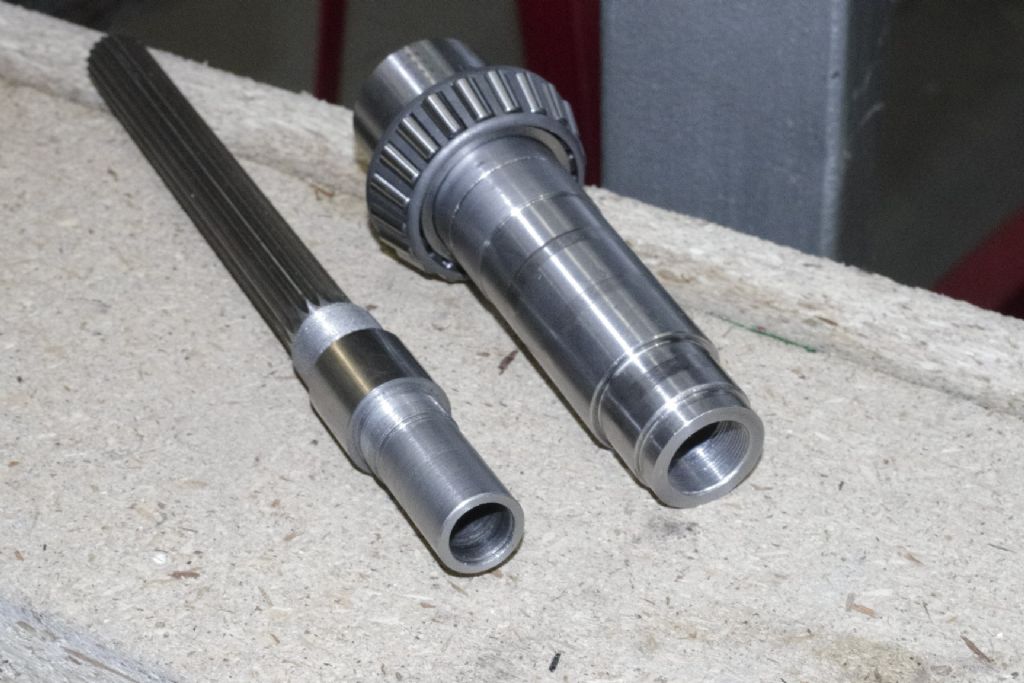The racks pinion shaft on the museums Smart & Brown model A apron was very badly worn on the od particularly next to the gear where it ran through a bronze bush. The bush was easy to replace, but the shaft and gear was not. I turned up a new shaft with a reduced diameter where the gear went, and bored the old shaft to the same size deeper than the width of the gear. The gear was then parted off the old shaft and Loctited onto the new shaft with 638, after thoroughly degreasing the parts. The joint was about 5/8" diameter by 1/2" wide. After the rest of the wear in the apron was attended to and it was re assembled, there was a suspicious amount of slippage. The Loctite wasn't enough. Mike found some 1/16" diameter needle rollers, and he drilled the joint axially in three places 120 degrees apart and Loctited them in place after cutting them to length. Fortunately there was enough thickness of metal to do this and it has been ok ever since.
Your joint length is nearly 4 times as long as the one I had made which slipped, which is a good sign. If you do decide to use a pin, then fitting a properly reamed taper pin would be much better than a roll pin. The strength of the joint is increased if the surface finish of the components is not too smooth, a ground finish in one half of the joint would not be as good as if both were being turned.
Edited By old mart on 12/11/2019 19:33:56
Edited By old mart on 12/11/2019 19:45:55
AlanW.





